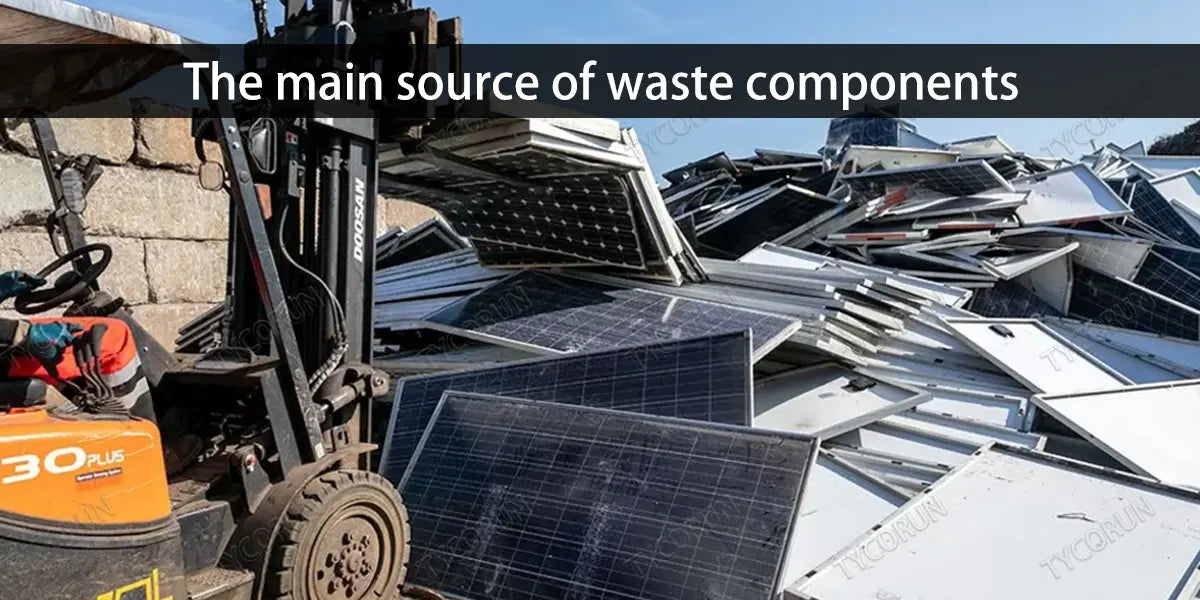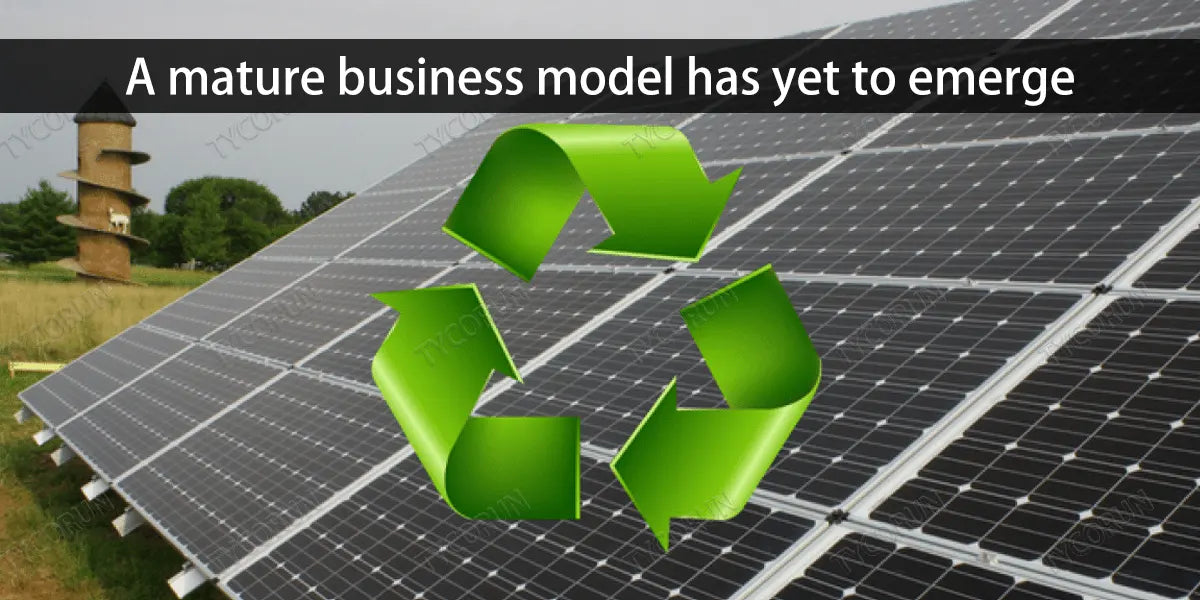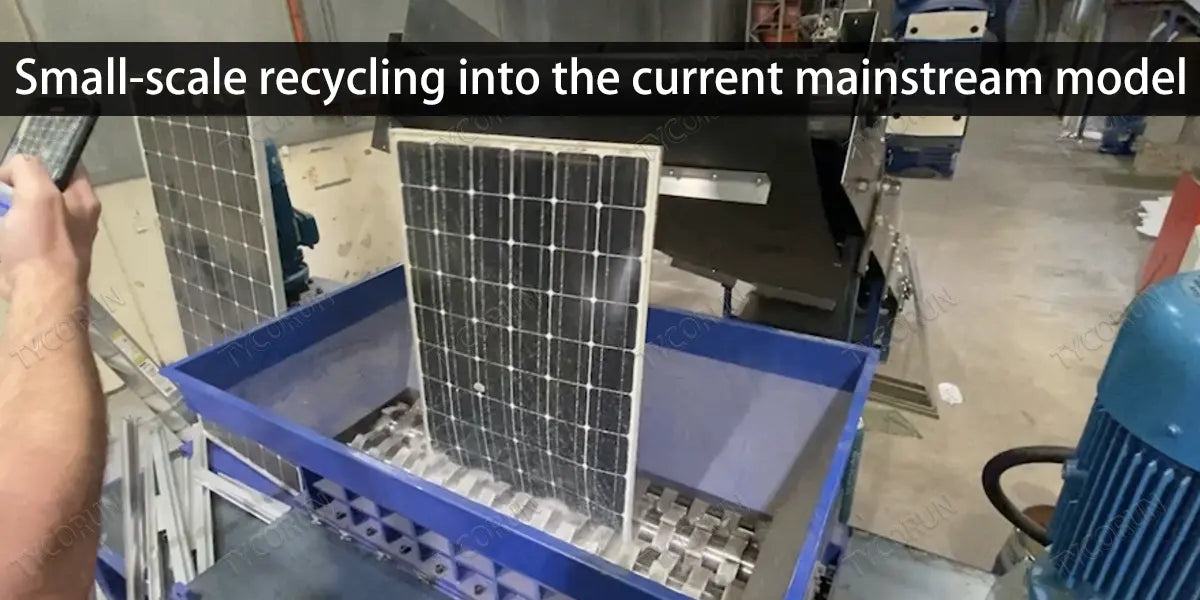
Main content:
In recent years, with the rapid development of China's photovoltaic industry and the rapid expansion of the scale, a large number of used and retired photovoltaic modules have become a problem to be solved.
A strange phenomenon is that the component recycling market has huge potential, but it has not yet ushered in a mature business model, and it is still mainly small-scale operations.
1. The huge market potential of solar panel recycle
Crystalline silicon solar photovoltaic modules are mainly composed of glass, aluminum alloy, plastic, 12 volt 200ah lithium battery, and so on. According to the data, the most mainstream components in the market at present are glass.
Glass accounts for about 70% of the total weight, aluminum frames, which account for about 18%; solar cells like 12v 100ah lithium ion batteries account for about 4%; and lead, silver, gallium and other metals, which account for about 1%.
The following are the main steps for recycling silicon solar modules today:
- Remove aluminum frame (100% reusable).
- Separate glass along conveyor belt (95% reusable) 3.500 ° C heat treatment (this allows evaporation of small plastic components and easier separation).
- Silicon wafers are etched and melted into a reusable slab (85% reusable).
As of 2030, China's photovoltaic module waste will reach about 18 GW, or about 1.4 million tons of waste, the output value of about 13 billion RMB. By 2040, the cumulative waste volume of photovoltaic modules will reach 253GW, about 20 million tons, and the output value will reach 150 billion RMB.

Although, according to the component life of 20 years, about 2030, China's photovoltaic modules will enter the scale of the retirement period, in fact, it is earlier than expected.
2. The main source of waste components
At present, the waste components to be recycled in China are roughly derived from four aspects:
- Power generation is not as expected and pv modules are eliminated in advance
Due to the immature technology and uneven quality of some of the early photovoltaic power stations, the components were eliminated in advance if they did not reach the retirement period. There are also some businesses that will pursue efficient power generation by removing old photovoltaic panels and replacing them with new efficient components.
- Damaged photovoltaic panels due to external factors
Although photovoltaic panels generally have a 25-year warranty, this warranty refers to the linear warranty of photovoltaic panel power generation, ensuring that the power generation is not less than 80% within 25 years after installation.
However, if it is man-made photovoltaic panel damage, or caused by natural disasters. In the absence of the corresponding insurance, it cannot be guaranteed and can only be scrapped.
- From demolition
In the case of the demolition of the original home energy storage, the roof power station had to be dismantled and disposed of. If the owner has other places to relocate, this will incur construction costs. In this case, some owners of old power stations will feel that it is not cost-effective; it is better to dispose of photovoltaic panels directly.

- Company's scrap and defective goods
And this is currently the source of most of China's photovoltaic recycling enterprises. With China's huge installed PV capacity, the support of these major sources makes the module recycling market expand faster than expected.
3. A mature business model has yet to emerge
However, such an emerging market with a huge market space has not yet undergone initial industrialization. Many users with waste component disposal needs will have many problems. Not knowing who to contact or what to prepare for. It sounds incredible.
On the one hand, China is currently the country with the most patent applications for solar panel recycling technology, and many companies have mastered the world's most advanced panel recycling technology, and some have initially established factory demonstration lines.
On the other hand, for the recycling of waste photovoltaic modules, China has also formed a preliminary industrial cluster. The reason why the industrialization process is slow, in the final analysis, is because the current recycling of photovoltaic modules in China has not released many market dividends.

First, obtaining the supply of waste components is a major challenge. On the other hand, according to the existing experience, under the mainstream formal photovoltaic module recycling and disposal method in the current market, the profits of enterprises recycling photovoltaic modules are more difficult to cover the costs related to transportation, dismantling and recycling, environmental protection and so on.
4. Small-scale recycling into the current mainstream model
If it operates in full compliance with the market mechanism, it is difficult for a mature business model to survive in the recycling market. This is also why most of China's waste photovoltaic module recycling is carried out in fragmented form.
After small companies recycle waste photovoltaic panels, they generally do not adopt regular photovoltaic module recycling and disposal methods. It is understood that according to the degree of scrap of photovoltaic panels, there are generally three ways of treatment:
For the old models of photovoltaic panels that are replaced due to low power, but can still be used normally, the recycling agency will resell them at a low price to some regions or countries where the development of electricity is relatively backward and the demand for land cannot keep up for secondary use.
For photovoltaic panels that have lost their power generation capacity but whose surface is intact, they will be sold to customers with special needs, such as building a sun room, taking a canopy, taking a shed, and so on.
For completely discarded high efficiency solar panels, the aluminum frame, cable and junction box are manually removed, and the glass, metal and silicon are separated and reused.

Only the frame of the photovoltaic module is removed to sell aluminum alloy, and the rest is stacked, landfill or incinerated, which hardly bears the cost of environmental protection. Since there is basically no need to bear the cost of environmental protection and the cost of formal dismantling, the price of recycling will be relatively high.
Generally, the price is given according to the power specifications of photovoltaic panels, brands, service life, whether there are defects, and the address and quantity of delivery, and the minimum is generally not lower than the price of selling aluminum.
5. Conclusion
However, at present, China's photovoltaic panel recycling industry is more complex, and some recycling institutions are not even familiar with the basic module version specifications.
Often, a reasonable recovery price can not be given based on the actual value of waste photovoltaic panels, but it also leads to the residual value of photovoltaic panels that can not play a role.
In the long run, China's photovoltaic module recycling industry forms a mature business model, indicating not only the need for further support of policies, but also the need for the industry to develop more scientific and reasonable standards, so that more enterprises actively participate in the market to give it vitality.
Related articles: home solar panels manufacturers in the world, best batteries for solar off grid, distributed pv system